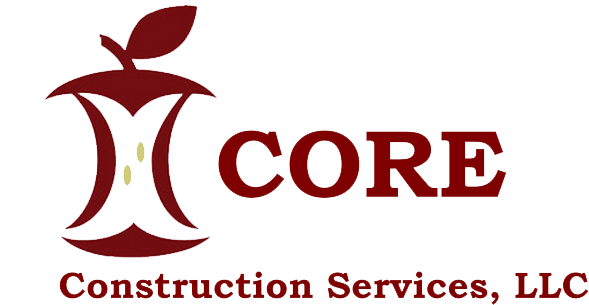Putting together a winning bid proposal is a lot more complicated than putting some numbers together and hoping for the best. Good bid preparation requires a lot of time and effort that involves everything from reading and fully understanding the plans and specifications to accurately estimating costs for labor, materials and equipment. Making even the smallest mistake can mean the difference between having a winning bid proposal and missing out on a coveted project.
Bidding the Wrong Projects
You don’t have to bid on every job you come across. Winning jobs your company can’t adequately perform can be just as costly as not winning them. Remember, it is never too late to abandon a bid you are working on. For example, let’s say you have purchased plans, attended the prebid meeting and started taking subcontractor pricing and you start crunching the numbers only to realize that your company won’t make an acceptable profit. The best thing to do is dump it and move on to the next project.
If at any time during the preparation of a bid you determine that your company cannot adequately handle the scope and requirements of the project you need to make the smart business decision to abandon your bid. Finding the right balance between bidding and winning enough jobs can be difficult.
On the one hand, you don’t want to bid and win so many jobs that you get to the point that you can’t properly manage and deliver the projects but you also don’t want too little work that you aren’t making any money and your workers aren’t staying busy. Selecting the right work to bid is vital to maintaining a profitable business.
Incomplete Bid Forms and Documents
Failing to fully complete the bid form and submit all required documents is a surefire way to get what might otherwise be a winning bid rejected. Required documents and paperwork can be anything from bid bonds to acknowledging receipt of any addenda. A good way to ensure that you have all the required paperwork for your bid is to use a checklist as you prepare your bid and then go back and double-check to make sure that everything is included. It never hurts to get another set of eyes to look over the bid proposal to make sure nothing has been forgotten before you submit your bid.
There are a few other requirements that go along with preparing your bid that can also get your bid rejected if you don’t comply with them or simply overlook them. The first is failing to get prequalified to bid a project when it is required. The second is not attending a mandatory prebid meeting. If either of these is required in order to bid on a project and you fail to comply you will not be allowed to bid on the project.
The third and most important of these is failing to submit you bid by the due date and time. All of these requirements will be clearly stated in the bid invitation and failure to comply will result in a rejected bid. Don’t let the time and effort you spent preparing your bid go to waste because you forgot to do something as simple as properly signing your bid or getting it delivered to the bid opening on time.
Inaccurate Takeoffs
If you don’t take the time to fully review the plans and specifications to determine accurate measurements and takeoffs it is going to result in incorrect construction costs when calculating your bid. Accurate measurements and quantities are essential in accurately bidding a project. Takeoff software can ensure that correct measurements are obtained in order to submit an accurate bid.
Inaccurate measurements will cause you to miscalculate the amount of building materials and labor needed to complete the job which in turn will cause you to either over- or underestimate your construction costs. Using the right units of measure is also important when calculating your bid. Using square feet when you should have used square yards or vice versa can drastically affect your estimated costs.
You also need to make sure that you are taking measurements from the right place. Often the plans will instruct you not to scale the drawings or to use the written or calculated dimensions provided in the specifications. This occurs more often when electronic documents are used because enlarging or shrinking the size of the drawing to print them can result in the scale being incorrect which would adversely affect your bid. If there is ever any doubt as to where to take your measurements from you should contact the architect for clarification.
Not having a good understanding of the existing site conditions can create problems down the line should you be awarded a contract. Unique site condition may exist such as limited accessibility or location that would result in additional costs on items like transportation, equipment and labor. Failing to visit the site would leave you unaware that these conditions exist and that additional costs need to be factored into your bid and will cut into your profit if you were to win the job.
Many times a prebid meeting will be held at the construction site or a site visit will be held directly following a prebid meeting. Prebid meetings are held to in order for the project team to answer questions regarding plans and specifications, site conditions and other job specifics. Failing to attend a prebid meeting means you miss out on the best opportunity to get clarification on the requirements of the project.
This could be the only chance you get to walk around the site to have a better understanding of exactly what you will be dealing with. There are times when the prebid meeting is mandatory so failing to attend would result in not being able to even bid on the project. When preparing a bid proposal you want to have as much information as possible in order to compile a competitive bid and refusing to attend a prebid meeting or a site visit will put you at a severe disadvantage.
Failure to Seek Clarification
When preparing a bid you need to do your due diligence to ensure that you have all the pertinent information, that the information is accurate and that you have a complete understanding of this information. This means fully reviewing the plans and specifications to determine everything required to bid the project and complete the work. This includes knowing everything from what bonds are required to whether or not there are participation goals for minority business enterprises (MBEs) or if material substitutions are allowed in the bid. If you are unsure of any aspect of the project when preparing your bid you need to seek clarification from the point of contact for the project whether it is the architect, owner or owners’ representative.
Be aware that there are typically cut-off dates in place for questions in order for any changes to the plans or specifications to be made and for any addenda to be issued to the bidders. If you are unclear on any aspect of the project the onus is on you to get clarification. Making assumptions is not the way to submit a winning bid. If you aren’t able to get your questions answered to your satisfaction then you should probably reconsider bidding the project.
2 + 2 = 5 . . . WRONG!
Errors with your math or excel spreadsheet can have a devastating impact on your bid. Arithmetic errors can result in your bid being well under or well over the actual cost of completing the job. Manual calculations can easily result in arithmetic errors. Always use a calculator or some type of construction bid software to ensure that your calculations are accurate.
If you are using bid software or a calculator errors can typically be attributed to not inputting your numbers correctly. Always double-check your math to make sure that all your numbers and calculations are correct. This is another one of those instances where having another set of eyes to look over your figures and calculation can help prevent costly mistakes.
Not Evaluating Equipment Needs
When putting a bid together you need to make sure that you have all the necessary equipment needed to perform the work. This may mean you have to rent or purchase additional equipment. Even if your company owns all the equipment needed you need to make sure that isn’t already allocated for use at another jobsite and that no major maintenance or repairs are scheduled for when the equipment will be needed.
Check to make sure that the equipment is in good working order and operating at peak performance which might otherwise cause delays in your construction schedule. Equipment that isn’t optimally performing can increase the time it takes to complete certain tasks. Unexpectedly having to rent additional equipment or face delays can negatively affect the bottom line on a project. Remember to factor in the fuel costs to operate the machinery and to transport the equipment to the jobsite.
Not Qualifying Subcontractors
Getting subcontractor pricing can be complicated. You want competitive prices from your subcontractors but you also want some assurance that they can perform the work required effectively. This is true whether it is a subcontractor you are using for the first time or one that you have worked with for years. One solution is to set up a prequalification process for subcontractors who wish to work with you. This allows you to have a better understanding of the type of work they are capable of performing by evaluating the quality and performance on past projects.
At a minimum you should get bids from at least three different companies for each trade you will need to subcontract out work for to ensure you are getting the best prices.
Carefully review and evaluate every sub bid to make sure that the prices quoted are complete and accurate. When requesting bids from subcontractors, clearly define the scope of work that the subcontractor is expected to perform. If you don’t clearly define the scope of services being requested from subcontractors it may result in unnecessary costs being added to your bid from overlapping work being bid by both you and your subcontractor.
Being able to accurately estimate labor costs can be one of the most difficult and trickiest aspects to preparing your bid proposal. To determine your labor costs you have to factor in hourly wage rates with the number of man-hours a specific task will take to complete. You need to take into account the productiveness and experience of your workers.
Employee turnover, absences and injuries can all affect your actual labor costs. More experienced workers may be able to complete tasks quickly which would reduce the number of man-hours needed but you will have to pay a higher rate for their services. Workers with less experience will require more man-hours to complete a job but you can pay those workers a lower wage.
Not Factoring in Overtime
Wage rates can vary greatly from state to state and even from county to county. It is important to understand what if any wage rates apply to the project you are bidding in order to incorporate those rates into calculating your labor costs. Wage rate determination is required on all Federal Government construction projects as mandated by the Davis-Bacon Act. Wage rates are determined by the location of the project and the type of construction being performed.
There are 32 states with prevailing wage laws for public construction projects. Always be sure to check the current prevailing wage rates where the construction is taking place so you can accurately determine your labor costs. When determining your labor costs don’t forget to factor any projected overtime needs as the wage rates for overtime hours worked can be as much as double the prevailing wage rate.
Misunderstanding Material Requirements
Costs for building materials and supplies can change rapidly and can vary greatly in different areas of the country. If specialty materials are required that you aren’t familiar with you shouldn’t assume that the cost is comparable to similar items. Your best bet is to call around to local suppliers to get up-to-date costs for materials and delivery. ake sure that the building materials and supplies required in the specifications are clearly defined so that you are pricing the right materials. If you are uncertain of the materials being requested in the specifications you should always get clarification from the architect, owner or owner’s representative.
Make sure that the building materials and supplies required in the specifications are clearly defined so that you are pricing the right materials. If you are uncertain of the materials being requested in the specifications you should always get clarification from the architect, owner or owner’s representative.
Rushed Bids
Preparing a good competitive bid proposal takes time. If you try to rush through putting a bid together it is going to lead to mistakes. You need adequate time to read through and understand the plans and scope of work and gather and evaluate subcontractor bids. Don’t fall into the trap of thinking that if you’ve done similar work in the past that you can just slap a bid together without doing your due diligence.
Putting a bid together is more involved than just pulling some numbers together and filling out a bid form. If you don’t have the time to fully evaluate and compile a proper bid then you shouldn’t attempt to do so. Sometimes not bidding a project is a better business decision than submitting a bid that you threw together at the last minute.
Putting a bid together is more involved than just pulling some numbers together and filling out a bid form. If you don’t have the time to fully evaluate and compile a proper bid then you shouldn’t attempt to do so. Sometimes not bidding a project is a better business decision than submitting a bid that you threw together at the last minute.
Overlooking Risks
Identifying and managing risks is probably the most overlooked aspect of preparing a bid proposal. Every construction project comes with its own unique set of risks. Once you’ve identified the potential risks, you need to analyze and evaluate each one individually so that they can be properly managed and mitigated if or when they occur.
Take into account the probability of the identified risk and the impact it can have on the project. A low probability risk with a low impact might be easy to mitigate, but a high probability risk with a high impact that you can’t effectively manage could be detrimental to the profitability of the project. By identifying and evaluating possible risks associated with a project while preparing a bid will make you better prepared to handle a situation when something goes wrong.
Preparing a construction bid proposal can be a haunting task. A competitive and winning bid proposal requires a lot of time and attention to detail. Making mistakes can lead to submitting a lot of overpriced, uncompetitive bids or worse . . . a lot of underpriced bids that you win but lose money. The key to winning more bids is being able to accurately estimate all costs required to complete the job while factoring in a reasonable profit for your company. That can easily be accomplished by avoiding these 13 horrifying sins of construction bidding.
Happy Halloween!







